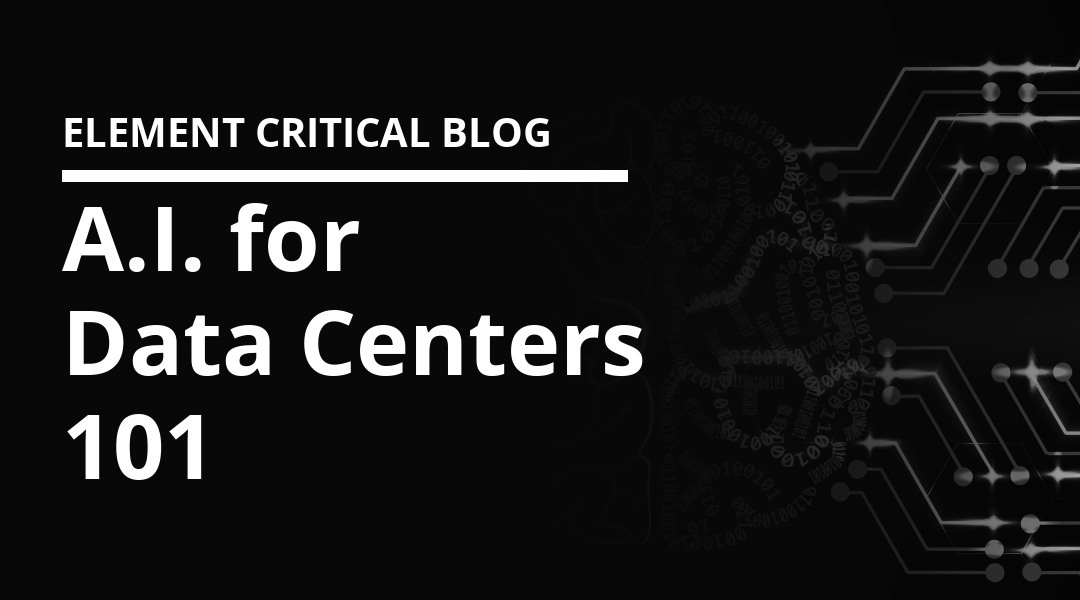AI for Data Centers 101

Artificial intelligence (AI), machine learning (ML), deep learning (DL). Key technologies that are transforming organizations and the consumer marketplace.
When you decide to move forward with a project based on AI, ML, or DL, you’re jumping up a considerable level when it comes to the implementation of the infrastructure you’ll need to make it happen.
You have huge amounts of data you need to store, process, and analyze. You need massively powerful processing to handle unstructured data such as video and social media content as well as more traditional, structured data sources. Your network connectivity needs to be able to handle all that traffic between your systems with enough headroom so that you won’t encounter latency that will slow down your applications and processes. You need lots of rack space, plenty of power, and a physical layout that keeps airflow and cooling going to where it needs to go before it needs to get there. And there’s no standard AI/ML/DL configuration. It’s not like you’re setting up a web server farm or an email infrastructure, or any well-known or commodity application or service.
Have we made our point? When it comes to the data center, AI/ML/DL is a heavy hitter that can’t effectively be dropped in to anyone’s pick list of standard configurations.
Let’s cover some basics.
Definitions
Element Critical sees today’s Artificial Intelligence as the ability for computers to mimic human behaviors on specific tasks- also referred to as narrow AI. We experience this in our daily lives when we talk to a smartphone or smart home speaker for a web search, or driving directions, or when we ask a streaming music service to play our favorite artist. Retailers use AI to enhance the customer experience and derive actionable insights from sales data. It’s well known that social media channels use AI to target content and advertisements to individuals based on their usage preferences. In the arts, AI-developed music-generating algorithms can provide inspiration to musicians’ creative processes.
How do systems rise to the level of AI? They’re machines, after all, and by themselves, they have no more of a knowledge base than an infant. Like any computer-based applications, they need input, they need data to feed into their processing routines and algorithms. That’s what Machine Learning is all about. ML uses these algorithms, processes, and models to analyze data. The more data, the more effective the processing. And when there’s huge amounts of data involved – let’s say a single day’s worth of Facebook activity – the analysis of what was and what is becomes so definitive that it can be used to predict what’s most likely to happen next. It essentially trains the application to perform its function in much the same way humans learn a new task or a career by processing the facts we learn and our own experiences.
Moving beyond ML, we come to Deep Learning. From a high-level point of view, DL can be thought of as a more in-depth execution of machine learning. However, that would be an understatement. Systems capable of DL rely on a physical and structural design referred to as neural networks, since the paradigm on which they’re based on is inspired by how biological brains process data, using multiple nodes in multiple layers to come to a conclusion in a given situation. DL used to be achievable only by the largest supercomputers, but we can thank Moore’s Law for making it available to businesses and organizations of all sizes. The constant innovation of the brightest minds in the hardware infrastructure industry have virtually eliminated the timespan once expected to achieve such capabilities. DL is what gives systems the ability to recognize patterns in the most complex forms of data, such as video and images.
To summarize: Think of AI as one or more implementations of human-like capabilities, ML as how the AI system is capable of learning to perform those functions, and DL as a Ph.D in machine learning.
AI implementation in the data center
At the start of this post, we mentioned all the different physical components of an AI implementation. While businesses of all sizes can use AI to improve internal efficiencies, customize the customer experience, and increase revenue thru AI’s predictive capabilities, AI systems are complex by their nature (emulating the functionality and reasoning capability of that most complex of computers, the human brain).
There is no “standard” AI implementation. You may know exactly what you need from the hardware perspective (processors, storage, network, number of rack U’s), but all that computing power is going to demand a customized, individually-prepared physical environment. Do you have a data center that can handle such a high-density task? Can you provide the power needed? Can you provide the cooling – not just in terms of BTU’s, but in terms of being able to control airflow so that cooling gets to where it’s needed?
Finding a data center provider who will take your requirements and provide the optimal environment for your AI applications is essential. You can’t simply select a provider off the first page of a Google search and assume they will be able to provide the solution you need. If a provider asks you to change your specs so they can slot you into one of their standard configurations – they are not the right fit for an AI deployment.
According to Jason Green, Chief Technology Officer for Element Critical, “Enterprises with AI initiatives should seek service providers that that takes the time to understand your unique business requirements, have the expertise to evaluate your current data center solution, upgrade it if needed, work with you to build a new data center that will be up to hosting your current and future AI/ML/DL applications, or provide customized, scalable data center solutions.”
Get in touch with Element Critical to learn more about data center requirements for AI deployments., and let us customize a solution that’s right for your business.
